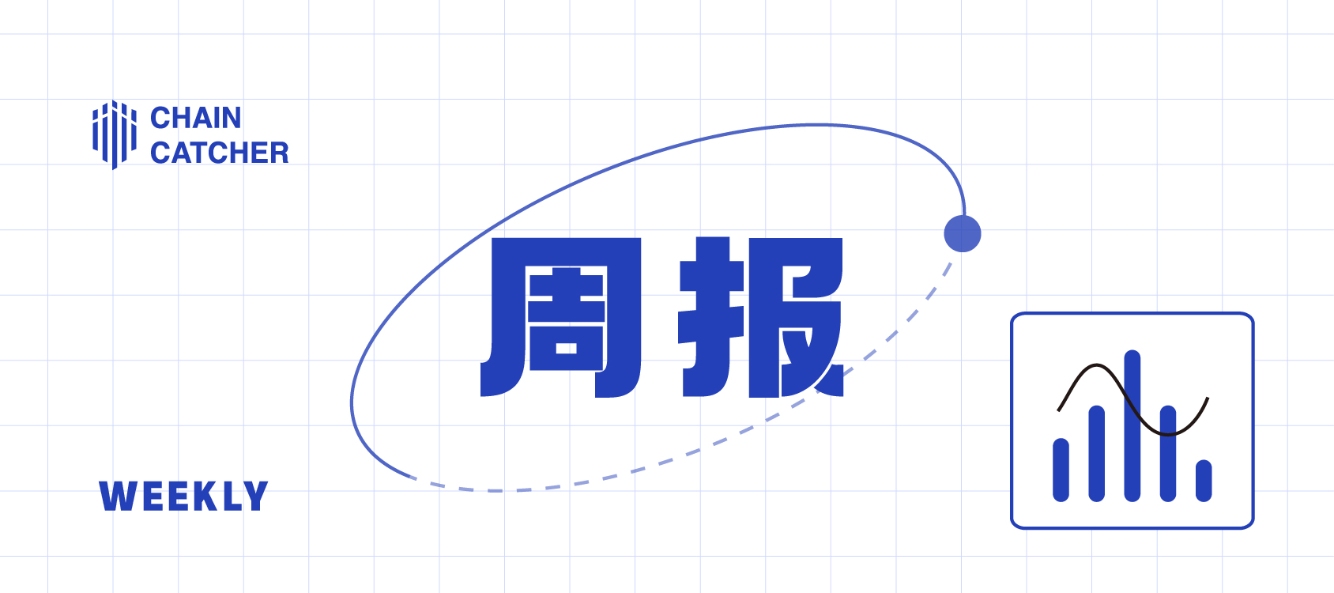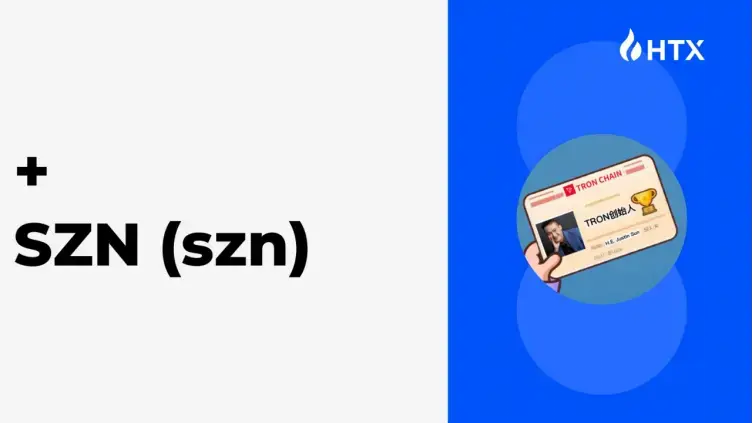Weekly Report | US Judge Imposes $125 Million Fine on Ripple; Most Web3 Companies Settling in Hong Kong Face Difficulties Opening Bank Accounts; Tether Plans to Double Its Workforce in the Next Year to Enhance Compliance Capabilities
Organizer: Luan Peng, ChainCatcher
"What Important Events Happened This Week (8.5-8.11)"
1、Trump Criticizes the Federal Reserve, Wants the President to Have a Say on Interest Rates
According to ChainCatcher and Jin10 reports, Republican presidential candidate Trump stated on Thursday that the president should have some say over interest rates and monetary policy, marking his clearest statement yet on the independence of the Federal Reserve, which contradicts the Fed's long-standing practice of being independent from political actors.
At a press conference at his Mar-a-Lago club in Palm Beach on Thursday, Trump said, "I think, for me, I've made a lot of money. I'm very successful, and I think, in many cases, my instincts are better than those of the people at the Federal Reserve or the Fed chairman." "
Trump criticized Fed Chairman Powell, saying he is "either a little too early or a little too late" in adjusting interest rates.
(Source link)
2、Yumen Police Successfully Dismantles Criminal Gang Using USDT to Transfer Fraudulent Funds, Involving Over 10 Million Yuan
According to ChainCatcher and the official WeChat account of the Jiuquan Public Security Bureau, recently, the Yumen Public Security Bureau's task force has been working continuously to combat crime. After more than a month of efforts, they traveled to Zhejiang, Jiangsu, Guangdong, and Fujian provinces, capturing 9 suspects who used virtual currency "USDT" to transfer fraudulent funds and illegally profit, successfully dismantling a criminal gang that used "USDT" to transfer fraudulent funds, involving over 10 million yuan.
(Source link)
3、Tether CEO: Plans to Double Staff in the Next Year to Enhance Compliance Capabilities
According to ChainCatcher, Tether CEO Paolo Ardoino stated in an interview with Bloomberg that the company plans to double its staff in the next year to strengthen its capabilities in compliance and other areas, expecting to reach about 200 employees by mid-2025.
(Source link)
4、OKX Star: Any OKX Users with Direct Fund Interaction with Tornado Cash Will Face Account Closure
According to ChainCatcher, OKX Star posted on the X platform stating that sanctioned individuals cannot successfully open accounts on OKX. Additionally, users who have already opened accounts will trigger compliance risk control if they deposit from sanctioned entities (such as Garantex and Tornado Cash) to OKX or withdraw from OKX to these sanctioned entities, leading to account closures.
He emphasized that anyone who has any financial interaction with Tornado Cash will face account closure, without exception.
(Source link)
5、ZK Trading Platform Vessel Completes $10 Million Seed Round Financing, with Participation from Sequoia Capital and Others
According to ChainCatcher, the ZK order book trading platform Vessel has completed a $10 million seed round financing, with participation from Sequoia Capital, Scroll co-founders Sandy Peng and Ye Zhang, Avalanche Foundation, Algorand Foundation, IMO Ventures, Folius Ventures, Incuba Alpha, and a number of angel investors.
The funds from this round of financing will be used to combine the efficiency of CEX with the transparency of DEX, improve liquidity efficiency, and develop advanced ZKP solutions for DeFi.
(Source link)
6、RootData Releases Top 50 Web3 Angel Investors List, Featuring Balaji, Sandeep, Sandiago, and Others
According to ChainCatcher, based on statistics and analysis from the crypto asset data platform RootData, from August 2023 to the present, market financing events and secondary market conditions have risen in tandem, with financing rounds down 10% compared to the peak Bitcoin price in November 2021. During the same period, monthly financing amounts have remained at the "pressure level" of $1 billion, dropping from $6.12 billion at the previous bull market peak to $1.01 billion, a decrease of about 83%. Data indicates that during this bull market cycle, project valuations have been corrected, while project financing demands have increased, but the difficulty of financing has also expanded. Additionally, the fundraising and exit pressures on institutional investors have been increasing, so the entry of Web3 angel/individual investors will help support more early-stage Web3 entrepreneurs and project innovations.
RootData has released a list of the top 50 Web3 angel investors based on investment activity and influence over the past year (August 1, 2023 - August 1, 2024). Among them, the top 10 angel investors with the most actions in the past year have collectively participated in investments totaling $1.88 billion (this data is based on total project financing), participating in 234 financing events. These investments are mainly distributed across infrastructure (15.9%), DeFi (9.2%), and GamFi (8.3%). New track AI projects account for 4.7%, higher than the modular (2.6%), LSD (2.1%), DePIN (1.13%), and RWA (0.75%) tracks that institutional investors are more focused on.
In the past year, Polygon co-founder Sandeep Nailwal was the most active with 39 actions, participating in Berachain's $100 million Series B financing, as well as financing for well-known projects like Ether.Fi, Succinct, and Movement. Solana co-founder and CEO Anatoly Yakovenko invested in 12 infrastructure track projects in the past year, accounting for 26% of his total investment. Well-known angel investor Balaji Srinivasan made 24 investments in the past year, with a total investment amount of $230 million (this data is based on total project financing), showing considerable interest in AI and tool projects. Notable NFT collector dingaling participated in over 30 financing events across different sub-tracks in the past year, with the GamFi track accounting for 48% of his total participation in financing (this data is based on total project financing).
7、Hong Kong Legislator Wu Jiezhuang: Most Web3 Companies Settling in Hong Kong Face Difficulties Opening Bank Accounts
According to ChainCatcher, Wu Jiezhuang, chairman of the Hong Kong Legislative Council's Web3 and Virtual Assets Development Subcommittee, conducted a survey of the Web 3.0 industry this month and announced the results today, finding that most Web 3.0 companies settling in Hong Kong face difficulties in opening bank accounts. In particular, when opening accounts with virtual banks, companies are often required to have shareholders or directors come to Hong Kong multiple times, maintain fixed deposits, and face high fees, taking nearly six months to successfully open an account. Wu Jiezhuang stated that while opening accounts with virtual banks is easier than with traditional banks, the prolonged delays faced by these Web 3.0 companies in opening accounts are undoubtedly a fatal blow to their business operations in Hong Kong, suggesting that the government and banks relax conditions where feasible.
(Source link)
8、JPMorgan Raises Probability of U.S. Economic Recession by Year-End to 35%
According to ChainCatcher, JPMorgan now believes there is a 35% chance that the U.S. economy will enter a recession by the end of this year, up from 25% at the beginning of last month.
Economists at JPMorgan, led by Bruce Kasman, wrote in a report to clients on Wednesday that U.S. data "suggests that labor demand is weakening more sharply than expected, with early signs of layoffs emerging." The team maintains a 45% probability of a recession occurring in the second half of 2025.
Kasman and his colleagues wrote, "We have moderately raised our assessment of recession risks, while our adjustments to interest rate outlooks have been more significant."
JPMorgan now believes that the likelihood of the Federal Reserve and other central banks maintaining high interest rates for an extended period is only 30%, down from a predicted 50% two months ago. As U.S. inflation pressures ease, JPMorgan expects the Fed to cut rates by 50 basis points in September and November.
(Source link)
9、U.S. Judge Fines Ripple $125 Million, Prohibits Future Violations of Securities Laws
According to ChainCatcher and CoinDesk reports, U.S. District Judge Analisa Torres ruled that Ripple's 1,278 institutional sales transactions violated securities laws, imposing a $125 million fine, significantly lower than the SEC's request for the recovery of $1 billion in illegal gains and pre-judgment interest, as well as a $900 million civil penalty.
Judge Torres reiterated her view that Ripple's sales of XRP to retail customers through exchanges do not violate federal securities laws. However, she prohibited Ripple from violating federal securities laws in the future and issued an injunction requiring Ripple to submit a registration statement if it plans to sell any securities. Last July, the judge ruled that Ripple's direct sales of XRP to institutional customers violated federal securities laws, but the sale of XRP to retail customers through exchanges did not violate any securities laws. During the trial, the SEC attempted to appeal this part of the ruling but was unsuccessful.
(Source link)
10、Paris Olympics Venues Suffer Cyber Attack, Hackers Demand Ransom in Cryptocurrency
According to ChainCatcher and Decrypt reports, venues for the Paris 2024 Olympics and dozens of museum shops in France have suffered a cyber attack, with hackers demanding payment in cryptocurrency. The hackers exploited the data processing systems of about 40 tourist attractions to collect sensitive financial data, with affected venues including the Grand Palais Museum. The French Cybercrime Unit (BL2C) is investigating the attack.
According to Paris authorities, this attack did not affect the scheduling of the Olympics.
(Source link)
"What Interesting Articles Are Worth Reading This Week (8.5-8.11)"
1、BTC Falls Over 25% in 7 Days, ETH Erases Year-to-Date Gains, Is It Time to Buy the Dip?
The sky is falling! August 5 may become one of the most panic-inducing Black Mondays in history. The global stock market and cryptocurrency market were almost all caught in a massive crash.
In the past 24 hours, BTC dipped to as low as $52,300. Within a week, BTC fell over 25% from over $70,000 on July 29.
Currently, BTC is around $54,600, with a 24-hour drop of over 10%. ETH once dropped to $2,111, now reported at $2,316, with a 24-hour drop of over 20%, effectively erasing all gains made this year.
The total market capitalization of cryptocurrencies has also fallen below $2 trillion, currently reported at $1.91 trillion, with a 24-hour drop of over 11%. Coinglass data shows that in the past 24 hours, the total liquidation across the network reached $788 million, with long positions being the most affected, totaling $676 million.
The rapid decline has also led to large-scale liquidations. According to Parsec data, in the past 24 hours, the liquidation amount in DeFi exceeded $320 million, setting a new high for the year. Among them, ETH collateral liquidations reached $187 million, wstETH $77.9 million, and wBTC $32.5 million.
Compared to the previous market panic triggered by the German government's sell-off and the massive compensation in Mentougou, this time the global market's risk aversion sentiment is more panicked and helpless, showing a more pessimistic expectation for future corrections.
According to the latest data from Alternative, today's Fear and Greed Index (FGI) indicates a state of panic, dropping from 34 points yesterday to 26 points.
2、Ethereum Price "Halved," Who Is the Mastermind Behind It?
Amid a global financial panic sell-off, the cryptocurrency market is experiencing a new turmoil.
In the past 24 hours, the global cryptocurrency market capitalization has dropped over 10%, with major cryptocurrencies like BTC and ETH seeing significant price declines. Accompanied by a sell-off wave on Sunday evening during the U.S. session, BTC plummeted to its lowest level since March, while ETH has "halved" compared to its high of $4,000 on March 12. In the past 24 hours, ETH has dropped over 20%, with a weekly decline of over 30%, completely erasing its gains for the year.
Amid the crash, there are cries of despair.
Why did ETH crash?
3、Accused of Causing Market Collapse, Uncovering Crypto Market Maker Jump Crypto
The day after the approval of the Ethereum ETF, the crypto market maker and investment firm Jump Crypto began a concentrated large-scale sell-off, being blamed by the community as the main culprit behind the current collapse of the crypto market.
On-chain data shows that in the past 10 days, Jump Crypto has sold ETH worth over $300 million.
Jump Crypto, as a well-known high-frequency trading company Jump Trading's crypto subsidiary, has participated in investments and incubation of several crypto projects like Solana and Wormhole, and was once a barometer of the crypto industry, with every move closely watched by the market. This unusual large-scale sell-off has led community users to speculate whether they are planning to exit the crypto space.
4、Federal Reserve "Firefighting," Cryptocurrency Rebounds, Is It Time to Buy the Dip?
After Blood Monday, the global market welcomed a brief respite today.
On Tuesday, Asian stock markets opened strong, with the Nikkei index leading the way and the Topix index also rising significantly. Japan's benchmark Nikkei 225 index rose over 8%, recovering some of the losses after a 12% drop on Monday; the Australian stock market remained flat; U.S. stock index futures also rose, with the Nasdaq 100 index futures expanding gains to 2%.
Meanwhile, the cryptocurrency market is also showing signs of rebound, with the total global crypto market capitalization rising above $2 trillion, and BTC price returning to $55,000.
Although investors remain concerned about the slowing U.S. economy and geopolitical risks, they are actively seeking opportunities to buy the dip.
5、The Surge of Ore: Mining Profits Near Shutdown Price, V2 Performance Lags Behind V1
Ore resumed mining on August 6, becoming a highly watched project on Solana this week, with its popularity skyrocketing on the Web3 data asset platform RootData.
On July 29, Ore founder Hardhat Chad announced the ORE v2 version update. According to Coingecko data, Ore's price hit a high of $1,409 per coin on July 30, rising nearly 40% within 24 hours.
Based on Ore V1's performance in April this year—when the project's mining popularity caused network congestion on Solana, forcing Solana to undergo technical upgrades—and the market's excitement before the launch of V2 mining, many miners turned their attention to this project and began mining after V2 launched.
Perhaps influenced by the widespread market crash, contrary to expectations, Ore's price has plummeted since resuming mining on August 6, dropping nearly 90% from its peak, with miners complaining in the community that Ore is at shutdown price.
6、Tether's Tenth Anniversary: Daily Earnings Near $30 Million, Still Hard to Escape "Exit" Risks?
Last week, Tether released its Q2 2024 financial report. Tether's Q2 net operating profit reached $1.3 billion, with profits for the first half of 2024 reaching a record high of $5.2 billion.
A profit of $5.2 billion in six months translates to nearly $30 million per day, which many listed companies can only envy. However, Tether, which has made a fortune, may not be as rosy as the financial report suggests.
On June 31, the EU's new MiCA regulation came into effect, meaning Tether's stablecoin officially faces mass delisting in Europe. Crypto exchanges like Binance, OKX, Uphold, and Bitstamp have announced the delisting of almost all USDT trading pairs in Europe due to this regulation.
Meanwhile, competitor Circle has obtained legal permission under MiCA to sell its USDC and EURC stablecoins within Europe.
Europe is the largest region for crypto adoption. According to a recent study released by CoinWire, Europe's cumulative cryptocurrency trading volume accounts for 37.32% of the global market.
Circle is taking a significant market share away from Tether. A CCData report shows that after the European regulations came into effect, trading volume of USDC trading pairs on centralized exchanges increased by over 48%.
Since its establishment in 2014, Tether has grown into a giant after experiencing multiple crypto crises and regulatory FUD. Will Tether's future be "too big to fail," or will it still face "exit" risks?
7、Overview of Consumer-Level Crypto Applications: A Visual Guide to the Entire Track Landscape
Defining the consumer crypto space is complex. After countless discussions and research by others, it is now time to consolidate all the information into a comprehensive overview. Let's delve into:
Consumer crypto applications are reshaping the blockchain landscape by providing unique and engaging experiences.
Unlike traditional decentralized finance (DeFi) applications, consumer crypto applications focus on social interaction, gaming, and user experience, pushing the boundaries of blockchain technology. Examples like Farcaster, Friend Tech, and Fantasy Top highlight the diverse possibilities of consumer crypto.
These applications leverage blockchain to enhance everyday activities, creating new ways for interaction and profit, from social networking to gaming.
A major advantage of consumer crypto is its ability to blur the lines between users and owners, work and play.
Platforms like Polymarket and Farcaster demonstrate how consumer software can be more accessible and appealing to the public. Building successful consumer crypto applications is not easy, facing challenges such as scalability, user retention, and differentiation.
However, by focusing on user experience and cultural integration, applications like Coinbase and OpenSea have successfully bridged the gap between crypto and mainstream culture. The next decade of consumer crypto promises to permeate various aspects of culture, from sports and politics to entertainment and health.
As blockchain technology evolves, more innovative applications are expected to provide practicality and value to billions of users worldwide. Due to its broad scope, defining the consumer crypto space is challenging. However, here is my perspective on its landscape:
8、Interpreting 5 Cases of Token Migration or Merging: How to Give Tokens a "Second Life"
If you are a project founder looking to upgrade or migrate your old token; merging with another token to give it a "second life" and revamping token economics and utility, then this article may be helpful to you.
Some may argue that projects only have one opportunity to launch tokens, but the reality is that markets and narratives change, team strategies and visions evolve, and even community expectations can shift over time.
In this case, token branding and market positioning may need to be updated to remain relevant, and token utility will change accordingly. Founders and teams should have this option as long as it is reasonable, well-considered, and agreed upon by the community.
This article conducts an in-depth study of five cases of token migration and merging to provide a more comprehensive understanding of key considerations, conversion mechanisms, timelines, price performance, and community responses.
Recently, due to the popularity of other public chains, the market's attention towards Ethereum seems to have diminished.
Is there any way to bring Ethereum back to the center stage?
Recently, Vitalik Buterin mentioned in a podcast that future focus will be closer to the "application layer."
If Ethereum's next direction is to vigorously develop "applications," then among the existing Layer 2 solutions, the newly launched Orbit by arbitrum is something you must pay attention to.
10、From Rejection to Embrace: What Has Driven the Legalization of Crypto Mining in Russia
After experiencing the 805 coin crisis, the crypto market was shrouded in gloom: Bitcoin's price plummeted from over $70,000 at the end of July to below $50,000. The Fear and Greed Index even dropped to 17, indicating a shift from fear to extreme fear. People began to question, "Is the bull still there?"
However, starting from August 8, the crypto market seemed to experience a spring breeze overnight, with cryptocurrencies rising across the board. In the early hours of August 9, Bitcoin even reached $62,394.50, up 25.33% from its low of $49,781.93. One major factor behind this significant rebound in the crypto market is closely related to Russia's newly passed policy legalizing mining.













